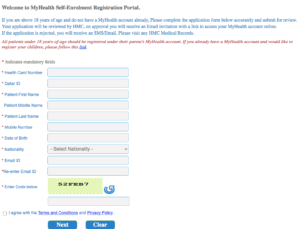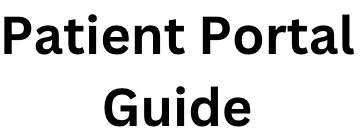The introduction of patient portals has fundamentally altered the delivery and reception of medical treatment. Patient portals are a doorway to a world of easily available healthcare services in today’s times, when technology has invaded every facet of our life. Particularly noteworthy is the “My Health Patient Portal.” The My Health Patient Portal is revolutionising the patient-provider dynamic by giving patients more control over their health information and treatment. We’ll go deep into the My Health Patient Portal here, covering everything from its features to how it helps users save time and money on healthcare administration.
Benefits of Using the My Health Patient Portal
Access to Personal Health Information: The My Health Patient Portal allows users to view their personal health records, including lab results, medication lists, immunization records, and medical histories. Having access to this information empowers patients to actively participate in their healthcare decisions and stay informed about their overall well-being.
Secure Communication: The patient portal provides a secure messaging feature that enables patients to communicate with their healthcare providers. This allows for convenient and timely communication, eliminating the need for phone calls or in-person visits for non-urgent matters. Patients can ask questions, request prescription refills, and seek clarifications, promoting efficient and streamlined communication.
Appointment Management: With the My Health Patient Portal, scheduling and managing appointments becomes hassle-free. Patients can view available appointment slots, book or reschedule appointments, and receive reminders, reducing the likelihood of missed appointments and improving overall healthcare coordination.
Prescription Management: The portal facilitates prescription management by allowing patients to request prescription refills and track the status of their prescriptions. This feature ensures that patients have an uninterrupted supply of necessary medications and promotes medication adherence.
Educational Resources: The My Health Patient Portal offers access to a wealth of educational resources, including articles, videos, and interactive tools related to various health conditions and wellness topics. Patients can utilize these resources to enhance their understanding of their health, make informed decisions, and adopt healthier lifestyle choices.
Streamlined Bill Payment: Managing healthcare bills becomes more convenient through the patient portal. Patients can securely view and pay their medical bills online, eliminating the need for manual paperwork or visiting the healthcare facility in person. This feature promotes transparency, reduces administrative burdens, and simplifies the payment process.
Enhanced Patient Engagement: The My Health Patient Portal promotes active patient engagement in their healthcare journey. By providing access to their health information, encouraging communication with healthcare providers, and offering educational resources, patients become more involved in managing their health and wellness. This empowerment leads to better health outcomes and improved patient satisfaction.
In conclusion, the My Health Patient Portal offers numerous benefits that enhance the patient experience and foster a collaborative approach to healthcare. By leveraging the portal’s features, patients can conveniently access their health information, communicate with providers, manage appointments and prescriptions, access educational resources, streamline bill payment, and actively engage in their healthcare decisions. The My Health Patient Portal is a valuable tool that empowers individuals to take charge of their health, promoting better healthcare outcomes and improved overall well-being.
How to Register for the My Health Patient Portal
Visit the My Health Patient Portal website: Start by visiting the official website of the My Health Patient Portal. The website address may vary depending on the healthcare provider or hospital you are affiliated with.
Click on the “Register” or “Sign-Up” button: Look for the registration or sign-up button on the portal’s homepage. It is typically located prominently and labeled “Register Now” or a similar phrase.

Provide Personal Information: Fill out the registration form with your personal information. This may include details such as your full name, date of birth, contact information (email address, phone number), and any other required information.
Verify Your Identity: Depending on the portal’s security measures, you may need to verify your identity. This could involve providing additional information or answering security questions to ensure the protection of your health information.
Create a Username and Password: Choose a username and password that you will use to log in to the patient portal. Make sure to select a strong password that combines letters, numbers, and special characters to enhance security.
Review and Accept Terms of Use: Carefully read the terms of use or user agreement for the patient portal. It outlines the responsibilities, rights, and usage guidelines associated with accessing your health information through the portal. If you agree, accept the terms to proceed.
Complete the Registration Process: Follow any additional instructions provided on the registration page to complete the registration process. This may involve agreeing to receive electronic communications or opting for certain notification preferences.
Verify Your Email Address (If Required): In some cases, you may need to verify your email address by clicking on a verification link sent to your registered email. Check your inbox or spam folder for any emails from the patient portal, and follow the instructions to verify your email.
Log in to the Patient Portal: Once your registration is complete and your account is activated, go back to the patient portal’s homepage. Use the username and password you created to log in to your account.
Explore and Personalize Your Account: After logging in, take the time to explore the features and options available in the My Health Patient Portal. Update your profile, review your health information, set communication preferences, and customize any other settings according to your preferences.
By following these steps, you can successfully register for the My Health Patient Portal and gain access to a secure platform for managing your health information, communicating with healthcare providers, and actively participating in your healthcare journey.
Also Read:
Navigating the My Health Patient Portal
Login to your account: Start by logging into your My Health Patient Portal account using your username and password. Visit the portal’s website and locate the login area. Enter your credentials and click on the “Login” or “Sign In” button.
Dashboard Overview: Once logged in, you will typically be taken to the portal’s dashboard. The dashboard provides an overview of your health information and important notifications. Take a moment to familiarize yourself with the layout and features available on the dashboard.
View Personal Information: Access the “Profile” or “Personal Information” section to review and update your personal details. This may include your name, address, phone number, emergency contacts, and insurance information. Verify that all information is accurate and up-to-date.
Access Medical Records: Look for the “Medical Records” or “Health Records” section to access your medical information. This can include lab results, medication lists, immunization records, and visit summaries. Navigate through the different tabs or sections to view specific details.
Appointments and Scheduling: If available, utilize the portal’s appointment feature to schedule or manage your upcoming appointments. Check for any scheduled appointments, view appointment details, and request changes if needed. Some portals may also offer the option to request new appointments online.
Secure Messaging: Take advantage of the secure messaging feature to communicate with your healthcare provider or their staff. Look for a “Messages” or “Inbox” section where you can compose and send messages, receive replies, and have private conversations related to your healthcare.
Test Results and Reports: In the “Test Results” or “Reports” section, you can access and review your laboratory test results, radiology reports, and other diagnostic reports. Click on each result or report to view the details and any accompanying notes or interpretations from your healthcare provider.
Prescription Refills: If applicable, check if the My Health Patient Portal allows you to request prescription refills online. Look for a dedicated section related to prescriptions or medications. Follow the instructions provided to request refills and monitor the status of your requests.
Educational Resources: Some patient portals provide educational resources, articles, or links to trusted health information. Explore the portal to see if there is a “Resources” or “Education” section where you can access valuable health-related materials to expand your knowledge.
Account Settings and Preferences: Don’t forget to review and customize your account settings and preferences. Look for an “Account Settings” or “Preferences” section where you can update your contact information, communication preferences, notification settings, and security options.
Remember to familiarize yourself with the patient portal’s layout and functionality, as the specific features may vary depending on the healthcare provider and the portal’s capabilities. If you have any questions or encounter difficulties while navigating the portal, reach out to the portal’s support team for assistance.
- Witham Patient Portal Login – Witham.org - August 17, 2023
- Glens Falls Hospital Patient Portal Login – Glensfallshospital.org - August 17, 2023
- VMG Patient Portal Login – Valleyhealth.com - August 17, 2023
